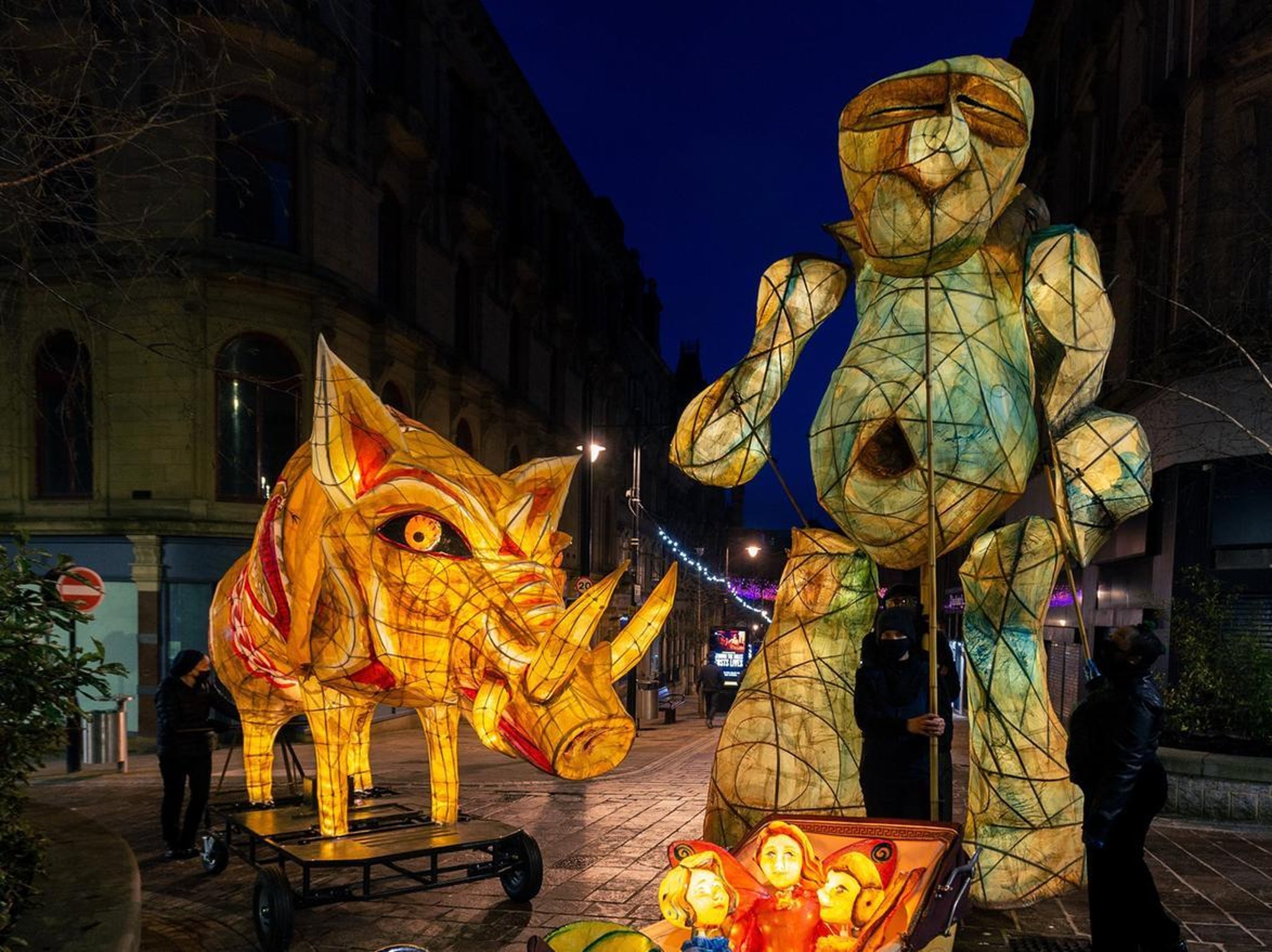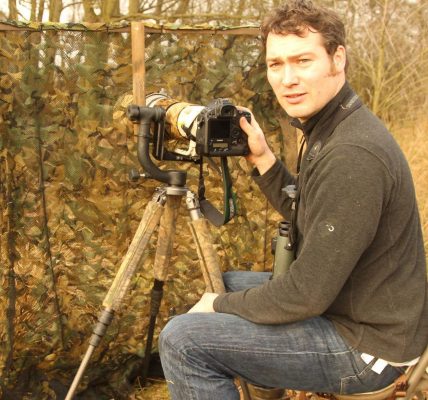Meet some of the artists behind Bradford's DIY attitude to culture
When actor Natalie Davies tells anyone that she lives in Bradford the response is depressingly familiar.
They almost certainly know it’s home to some of the country’s finest madras, they’ve often heard of its grand, turreted theatre and perhaps more curiously the city’s ice rink, described as the “finest in the world” when it opened in 1966, has left an indelible mark on those who visited it as children.
“It is almost always those three things – curry, the Alhambra, skating. Nothing else,” says Natalie, who for the last few months has been busy righting that wrong by creating a new play which she hopes will tell a less well-known story of her home city.
Full English is inspired by her grandma, who moved to Bradford’s Canterbury estate in the 1970s to be with the Pakistani man she had fallen in love with, but who her white working class parents struggled to accept.
The backdrop may be unapologetically urban, devoid of the grand Victorian architecture which frames the city centre, but for Natalie it represents an overlooked chapter in the history of Bradford which is worth retelling.
“My nan’s parents always accepted their grandchildren but at the start it did put a real strain on her relationship with her mum and dad and that took a long time to recover,” says Natalie, who recently became a mother for the first time.
“However, on the Canterbury estate there were dozens of other women like her and it was there that she found a whole new family.
“My nan learnt Punjabi, she completely embraced the culture and, while the relationship ultimately didn’t last, by the time they went their separate ways she had this really rich life.”
Natalie’s grandma is now living in a care home and having been diagnosed with dementia the woman she was all those years ago has gradually slipped from view. Her decline is another reason why Natalie is keen to tell her story.
“I don’t want to idealise it,” says Natalie, who is working with theatre company Bent Architect to stage Full English. “For a lot of families money was tight and unemployment was high, but I grew up on those same streets and since I left I have never found that same sense of community spirit. That’s something money can’t buy.”
Full English was initially conceived as a traditional studio play. However, the arrival of coronavirus caused Natalie and Bent Architect to rethink their ideas. With the support of the Bradford Producing Hub, which was set up to develop new work in the city, when the curtain does finally go up it will have morphed into three distinct performances.
“There will be a studio performance, but we are also going to be doing a second version on the estate itself and a third which will be available digitally,” says Bent Architect’s Jude Wright. “Each will tell the story from a different perspective and that’s something we wouldn’t have done had we not been forced to think differently because of the pandemic.
“Our aim has always been to produce work which gives a voice to the voiceless. There is a real DIY spirit in Bradford which means that even in a global pandemic we find a way to ensure we are heard.”
It’s that spirit of resilience which the team behind Bradford’s bid to become UK City of Culture in 2025 hopes to harness. The status would bring a multi-million-pound cash injection, but those vying for the title have to show not only that they are ready to exploit the economic and social opportunities which culture brings to a place, but that there are existing artistic foundations on which to build.
It’s a philosophy already being embraced by Cecil Green Arts. A collective of puppeteers, musicians and artists, in simpler times CGA works closely with community groups, creating lantern parades and live arts shows. However, with social distancing making much of their work impossible over the last few months they have had to rethink their approach, producing something arguably more ambitious in the process.
The Compendium of Mythical Beasts will hopefully premiere in the summer and, while it might borrow its title from the world of JK Rowling, it is firmly rooted in US, retelling folklore tales of Rombald the Giant who roamed nearby moors, the Cottingley Fairies and the Bradford Boar which appears on the city’s crest.
“We have missed the work we usually do, really missed it,” says Cecil Green Arts’ Judy Connor. “However, I also feel quite lucky. In lots of places the arts have ground to a standstill, but here we have been able to keep going. That’s in no small part down to organisations like the Bradford Producing Hub and I think a wider recognition that culture matters and that we have important stories to tell.”
While the paint is just about dry on the menagerie of giant puppets, like most involved in the arts, Judy can’t yet guarantee final performance dates. However, when the public does finally get to see the results of the company’s hard work she hopes it will also stand as testament to the artistic ambition of the city.
“We have never worked on this kind of scale before,” she adds. “It has been a huge learning curve, but excitingly it’s also seen us collaborate with other artists and that has been really inspiring.
“I think the whole process of bidding for City of Culture status is helping to give people confidence. It feels like a real validation of what we are doing.”
Bids for the 2025 title have to be submitted by the end of the year and if successful, Bradford will follow in the footsteps of Hull which was awarded the status in 2017. Detailed research about the long-term legacy of hosting the year-long event is under way, but bid director Richard Shaw has already revealed that if successful it could see jobs within the city’s creative industries double to more than 10,000.
“This is an incredibly young city and that makes it a really vibrant place to make work,” says choreographer Carlos Pons Guerra, whose latest piece, The Bull and the Moon, takes traditional fairytale motifs to explore gender and identity with a little flamenco thrown in for good measure. “It’s really easy with projects like this to throw money at eye-catching one-night spectaculars, which look good but which disappear as quickly as they arrive.
“However, the key is to invest in work which says something about place and identity. People might not think it, but Bradford has always had an activist culture. It has never been afraid of taking risks and when I was a student at the Northern School of Contemporary Dance in Leeds it was companies and theatres here that were staging the edgiest work.”
Growing up in Gran Canaria with Catholic parents who had lived under the shadow of Franco’s regime, much of Carlos’ work explores tolerance and a desire to break down barriers. “When I was two, my family thought it was cute when I played with my sisters’ flamenco dresses; when I was four it was no longer cute – I was made aware it wasn’t something boys should be doing.
“Initially when I moved to England I didn’t tell them I was studying dance, I knew they would find it hard to accept. Now though I can’t keep them away from my performances and that change has been lovely to see.
“Tolerance is what this world needs and it’s something that I have always found Bradford has lots of. It might be because it’s a city of so many different people and nationalities, but here I have always felt accepted for who I am.”
Natalie Davies agrees. “Bradford is somewhere many people have found the home they couldn’t find elsewhere. It’s somewhere people come together; a place where you can find the extraordinary in the ordinary.”
If the team behind the UK City of Culture bid is in need of a tagline, that may well be it.










